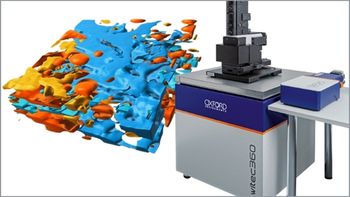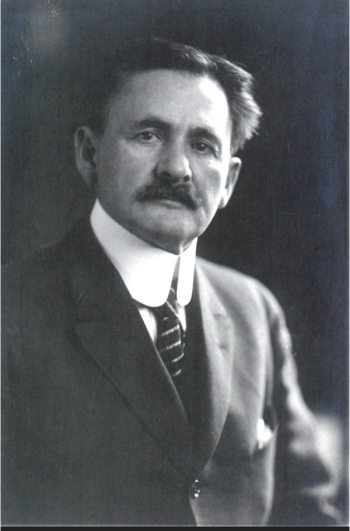
- Spectroscopy-10-01-2007
- Volume 22
- Issue 10
Raman Spectroscopy - An Old Technology That Has Come of Age
Columnist Fran Adar discusses the evolution of Raman spectroscopy instrumentation and new applications for this more sensitive, easy-to-use technology.
As a start, we should talk about why Raman is so interesting. The simple answer is that the measurement is nondestructive, and, if you can see your sample, you can measure it. That means you can measure materials enclosed in glass or polymer containers, and in aqueous (or other transparent) solvents. You can deliver the light to the sample with fiber optics. You can get orientation information by using the polarization properties of the Raman signal. And if you are using a microscope as a sampling device, the spatial resolution can be as good as 200 nm.
Fran Adar
What has happened to make the technology so much more practical? One of the major challenges of Raman is to extract the signal in the presence of the much stronger (106) elastic laser scattering. Starting in the 1950s, almost all instruments were based upon double-grating monochromators with single-channel detectors. To separate the laser line from the Raman signal, the focal length of these instruments was between 0.75 and 1 m — that is a big footprint! The typical light source was a water-cooled argon laser (0.2–5 W power was common), which itself required maintenance. Sampling typically was done in the 90° configuration, which is difficult to align. And, most incredibly, the measurement output was produced using a strip chart recorder. If your pen dried up, you lost your experiment.
The developments that have moved Raman spectroscopy out of the instrumentation dark ages were reviewed in the Waters Symposium (1) at Pittcon in 2003, but these include essentially four items. People in the field tend to think immediately of the introduction of holographic notch filters, which provide the laser rejection that previously was done in a large monochromator or spectrograph. But equally important was the development of multichannel detectors that provide multiplexing capabilities competing with Fourier transform technologies, air-cooled lasers that eliminate large utility and labor overhead of the water-cooled lasers, and high-powered, low-cost computers that enabled sophisticated hardware control and data treatment.
One last item that often is overlooked is the ease of sampling provided by the microscope. The microscope as a sampling device actually was conceived and realized much earlier — in the mid 1970s — but its ability to make measurements more easily than on a macro chamber was slow to be recognized. Raman old-timers would say that they had plenty of sample. They missed the fact that setting up the experiment was enormously simplified and that the signals can be much stronger than with macro optics. The larger signals result from the use of high NA objectives, which provide high collection efficiency. And unless you worked on a microscope, you wouldn't believe that it could even help with reduction and rejection of fluorescence backgrounds, another hindrance to routine use of the technology, but it does this too.
So things began to improve about the time that I bade adieu to academia and started working on the Raman microscope in the late 1970s, but they didn't really gather momentum until the 1990s, after the introduction of the filters, desktop computers, multichannel detectors (especially CCDs), and air-cooled lasers.
Thus far, we have established that the technology has become more sensitive and easier to use. What kinds of problems were looking for the Raman solution? From the beginning, we have been interfacing with industrial and government analytical laboratories that require solutions to difficult problems. One of the first that attracted attention was the ability to identify manufacturing microcontaminants. Products would come off the production line with defects that could be cosmetic or much more serious in terms of the product's function. Particles on integrated circuits could ruin the lithographic deposition of subsequent layers. Costs to the manufacturer to close down the fab lines could be tens of thousands of dollars per hour or more, even in the 1980s. Defects in polymer films might only be cosmetic, but customers could reject product. Defects in polymer fibers could cause weakness in the fibers, resulting in breakage — not a good thing if these fibers were to be used in tire cord. Defects in optical fibers also could cause breakage — in this case not a good thing for communication fibers — especially those that were being laid on the ocean floor. (Remember, satellite communications didn't always exist.)
In the early 1980s, people began making micro-strain measurements on silicon. The silicon phonon peak position was known to shift by tenths of wavenumbers to multiple wavenumbers when the crystal is under strain. Strain could be due to the geometry of the circuitry or to thermal mismatch with oxide or nitride layers. Such strain could cause delamination or "out-of-spec" electronic functioning. The latter effect follows from the fact that the carrier mobility can be enhanced or diminished by strain. Actually, engineers are now designing strain into circuits because the mobility of the carriers can be increased in the presence of strain; this increases the speed of the devices beyond what normal silicon would provide.
Strain can be built into a device by two methods: layering silicon on oxide (SOI) or by alloying with germanium. When using Ge, the devices often are built into a layer of pure silicon on top of a strained layer of SiGe in order to avoid "impurity scattering" of the carriers by the Ge atoms. Raman microscopy can separate the signals from various layers by using multiple excitation wavelengths that penetrate to different depths. Curiously, the strain information from Raman is better than even X-ray diffraction (XRD) because of the spatial resolution. The Raman measurement is coming from an area smaller than 500 nm, whereas XRD is being done on spots at least 100 times larger. Raman maps show a cross-hatch pattern to the strain (2) on a spatial scale of the order of millimeters, which means that the strain measured by XRD represents an average over this strain-induced pattern.
A hot topic in inorganic chemistry is carbon nanotubes. These are derivatives of graphite planes that are rolled up and capped with fullerenes. It turns out that Raman spectra of single-walled tubes can tell you exactly which type of tube is present by measuring the radial breathing mode found between 80 and 350 cm–1; the frequency depends upon the radius of the tube and the axis around which it is wrapped. Because these tubes are so interesting and have so much engineering potential, and because the Raman measurement gets valuable information from a single tube, many laboratories are using Raman equipment to characterize their materials.
The study of catalysts has matured within the last 10 years so that Raman is now being applied to characterize the catalyst and the reaction under operating catalytic conditions called Operando spectroscopy (3). Raman instruments are being integrated with Fourier-transform infrared (FT-IR), UV–vis, and mass spectrometry (MS), while performing temperature-programmed reactions.
Another field that has been opened up is the study of polymer morphology. Polymer morphology refers to the state of molecular orientation and crystallinity in the material, which reflects the history of the material. Fibers tend to have their molecules aligned along the fiber axis if they are spun rapidly enough, and the effects of this orientation can be followed in the polarized Raman spectra. In a study of spin-oriented fibers of polyethylene terephthalate (PET), we were able to show that, in this polymer, the crystallization process did not necessarily accompany the orientation process (4). Careful inspection of the spectra shows that there are effects of molecular orientation even when crystallization has not occurred, which also can be monitored. It is my understanding that this was new information, which might still be somewhat controversial.
Neil Everall at ICI, now Intertek (Wilton, UK) also studied orientation of PET, but in his case, he studied films (5). One of the things that he was able to show was that there was a gradient in orientation across the thickness of his films.
During the last two to three years, one of the hottest topics in Raman has been chemical imaging. Curiously, the concept of the original Raman microscope in 1972 (6) was based upon Raman imaging. The images produced on the original MOLE (Lirinord/Jobin Yvon, Lille, France) were not at all confocal: the monochromator was used as a wavelength filter to select the band of interest, and the image of the sample through that band was projected onto the camera. Such a scheme collects all of the background signals as well as the Raman signals. However, the images of an ideal sample were quite good. Figure 1 shows the Raman image of sulfur in a Celestine mineral sample that was recorded on the MOLE in the late 1970s.
Figure 1
Instrumental developments over the past 30 years have been critical to making the imaging concept a practical reality. While there are probably four or five optical schemes that have been implemented to produce Raman images, the highest quality images are produced by point mapping using an xyz motorized (or piezo) stage, sometimes in combination with a confocal scanning mechanism. The reason for this is that Raman signals so often are accompanied by backgrounds of considerable intensity, much of which can be rejected using confocal optics. For nomenclature, we try to use the term mapping to describe the method that is used to collect the signals, and the Raman image is the picture that is produced.
Raman images are of great interest in many fields of science, including mineralogy, polymer science, pharmaceuticals, and bioclinical analyses (pathology, histology, and biomedicine). In all of these areas, the spectra of the individual species tend to have many bands, making it difficult to produce images by selecting a band whose frequency is unique to only one species. One of the areas in which Raman imaging is providing important results is in determining the distribution of components in pharmaceutical tablets. Significant differences are seen between tablets of the innovator drug companies, generic manufacturers, and counterfeit samples. In the case of counterfeit samples, the Raman images can identify counterfeits clearly by the identification and distribution of excipients. As mentioned earlier, since "univariate" images are often difficult to produce because of the unavailability of nonoverlapping lines, "multivariate" techniques are being implemented. We will be exploring these developments in future columns, along with other hot topics such as surface-enhanced Raman spectroscopy, hyphenated Raman techniques, and portable Raman systems, to name a few.
Before I finish, I would like to get up on the bully pulpit. It seems that today there are few universities that are training "analytical spectroscopists." That means that some people are using instruments for analytical purposes and really do not know how to interpret the results. I know that learning to interpret spectra can be a daunting task. But it is worth the investment. I know of at least two good programs to get started — summer courses at Bowdoin College (Brunswick, Maine) and Miami University of Ohio (Oxford, Ohio). If there are others out there that you would recommend, please let me know, and I will list them for the readers.
Which brings me to the last comment. I would like this column to be a dialogue. If you have a topic that is of interest, please let me know and I will try to cover it. You can contact me at
Fran Adar, the new editor of "Molecular Spectroscopy Workbench," is the Worldwide Raman Applications manager for Horiba Jobin Yvon (Edison, NJ). She can be reached by email at:
References
(1) F. Adar, M. Delhaye, and E. DaSilva, "Evolution of Instrumentation for Detection of the Raman Effect as Driven by Available Technologies and by Developing Applications," Abstract #410-1 at Pittsburgh Conference 2003 (Orlando, Florida), manuscript published in J. Chem. Education (2004).
(2) H. Chen, Y.K. Li, C.S. Peng, H.F. Liu, Y.L. Liu, Q. Huang, J.M. Zhou, and Q.K. Xue, Phys. Rev. B 65, 233303-1–233303-4 (2002).
(3) I.E. Wachs, Catalysis Commun. 4, 567–570 (2003).
(4) F. Adar, Polymer 26, 1935–1943 (1985).
(5) T.N. Everall, Appl. Spectrosc. 52, 1498–1504 (1998).
(6) M. Delhaye and P. Dhamelincourt, Abstract 5.B Laser Raman Microprobe and Microscope in Fourth International Conference on Raman Spectroscopy (Brunswick, Maine, August 1974).
Articles in this issue
about 18 years ago
Market Profile: Low-Field and Fixed Magnet NMRabout 18 years ago
Time-Gated Confocal Raman Microscopyabout 18 years ago
Quantitative Mass Spectrometry: Part IIabout 18 years ago
Product ResourcesNewsletter
Get essential updates on the latest spectroscopy technologies, regulatory standards, and best practices—subscribe today to Spectroscopy.





